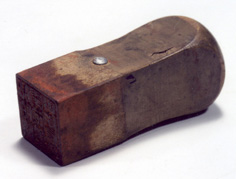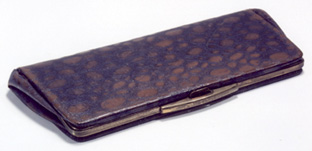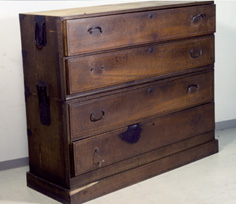Emotions Revealed |

|
Remnants of Those Who Never Returned
The only physical remains many families had of their lost loved ones were the possessions they left behind. These possessions became precious keepsakes the families preserved carefully to this day.
Every day, more relatives in search of loved ones appeared in the ruins. Desperate to know if the subject of their search was still alive, they surged into the large relief stations. People tried to wrest the list of patients out of each other's hands, contributing to the overall chaos. On classroom and corridor walls of schools serving as relief stations people scrawled messages about the whereabouts of particular individuals. Most returned home empty handed, unable to find even an item belonging to the person, much less a corpse. More than a few were permanently deranged by emotional suffering.
For these families, an item the deceased person loved, or simply some related object found in the burnt rubble became a treasured keepsake.
|
23 |
|
 |
| 24 |
 25 25 |
|
 |
Akatsuki corps seal
Kanjiro Hirama (then, 40)
Approx. 2,000m from the hypocenter
Donated by Etsuro Hirama (child)
Kanjiro Hirama was vice commander of the Army Marine Headquarters Akatsuki Corps. He was exposed in front of the gate on the way to the Hijiyama Army Marine Artillery Corps Command. After he was released, he worked at the Demobilization Bureau of the Ministry of Health and Welfare in Ujina. In August 1953, he died of leukemia.
When Kanjiro was hospitalized, one of his subordinates delivered the Akatsuki Corps seal, which was needed for approving decisions. Because the war ended soon thereafter, the seal remained in the household's possession.
|
|
Bag
Kikumatsu Seki (then, 55)
Place of exposure: unknown
Donated by Miyako Kawamoto (child, then, 17)
Approx. 2,000m from the hypocenter
Miyako Kawamoto was exposed at the Army Clothing Depot Branch in Koi. Unhurt, she walked all day to get near her home in Dambara. There she reunited with her mother, Iso. Miyako and Iso daily searched for her father, Kikumatsu. They never learned what happened to him.
This bag Miyako carried that day is the only gift Kikumatsu had given her.
|
 |
 |
| 26 |
 27 27 |
|
|
 |
| 28 |
|
 |
Chest of drawers
Misao Suenaga (then, 39)
Approx. 2,700m from the hypocenter
Donated by Kikue Suenaga (son's wife)
Misao Suenaga was exposed while demolishing buildings near Koami-cho as a member of the Volunteer Citizen Corps. Her remains were never found. After the war, Kikue's husband Masaki treasured this chest, burned on a drawer, as a remembrance of her.
|
|
|
|
|
|
 |
Girls Volunteer Corps badge, resume
Kikue Katayama (then, 17)
Approx. 4,000m from the hypocenter
Donated by Atsumu Katayama (younger brother)
Kikue Katayama, a member of the Girls Volunteer Corps, was exposed at her mobilization worksite, a unit of the Army Marine Headquarters (Akatsuki Corps) in Ujina. Escaping serious injury, she was sent by the army to Kanawajima Island. Until September 10, she engaged in relief of the injured. At discharge, she was exhausted from a work schedule that permitted little sleep. Saying she would get a job when she recovered her strength, she wrote her resume Instead, she began bleeding from her nose and gums. Her situation worsened in May 1946, and she died on the 19th.
|
|
Notebook
Sadako Kataoka (then, 15)
Place of exposure: unknown
Donated by Hideko Kataoka (mother)
Sadako Kataoka, in her third year at Second Hiroshima Prefectural Girls High School, was exposed on her way to her student mobilization work site and did not come home. On August 14, an acquaintance delivered her pouch and nametag to her home and told the family that her body was in Tokaichi on 9th. Her parents placed those items in her grave in place of her remains. A friend had given Sadako this notebook preserved by her mother for 60 years.
|
 |
|
|

